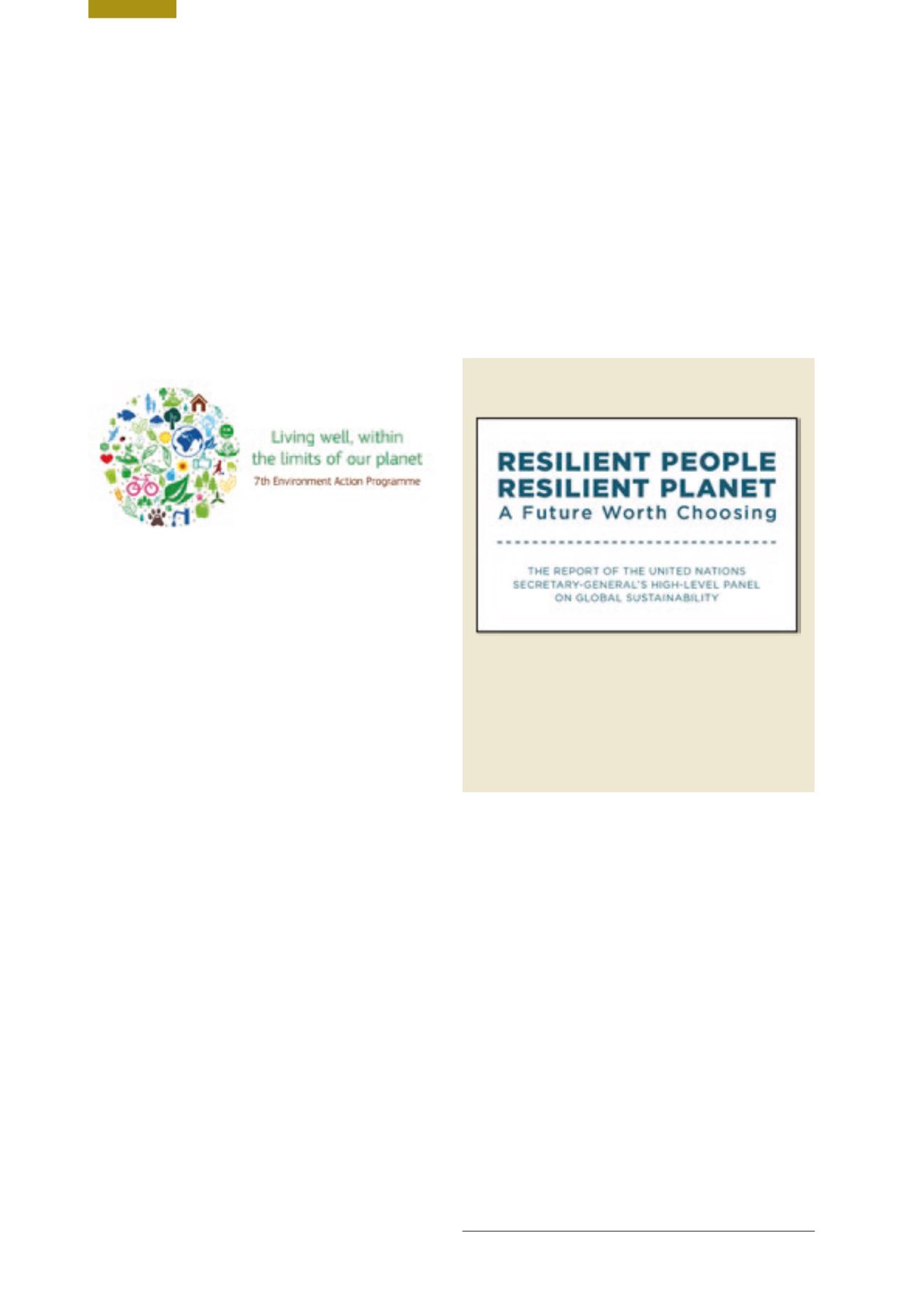

Ireland’s Environment – An Assessment 2016
150
commercialisation of innovations and better management
of resources over their whole life cycle”. The Programme
adds that all sectors of the economy have to contribute
to tackling climate change. Two of the nine priority
objectives stated in the 7th EAP relate specifically to
economic competitiveness, namely:
n
to protect, conserve and enhance the Union’s
natural capital
n
to turn the EU into a resource-efficient, green and
competitive low-carbon economy.
(Source: European Commission)
The full and even implementation of environment
legislation throughout the EU is seen as a sound
investment for the environment and human health,
as well as for the economy. Implementation can act to
drive sustainable ‘greener’ economic growth, bringing
with it opportunities in innovation and employment. In
a recent EU Commission publication,
Green Growth for
Jobs and Prosperity in the EU
(EC, 2016), the competitive
advantage of green growth is set out, but some key
obstacles to this opportunity are also articulated, including
regulatory obsolescence and contradictory or unintegrated
sectoral policy. The 7th EAP prioritises actions that aim
to deliver environmental and economic benefits through
legislative implementation, as well as actions to improve
environmental policy integration and coherence.
Resilient People, Resilient Planet:
The UN Policy to Promote Sustainability
The United Nations (UN)
Resilient People, Resilient Planet
policy document (UN, 2012) states that there are forceful
drivers that are challenging the sustainability paradigm,
such as current production and consumption patterns and
resource scarcity, investment expectations, demographic
change, changes in the global economy, growing
inequality, changing political dynamics and urbanisation.
The UN set out a number of priorities that have strong
economic solutions/interventions:
n
advancing education for sustainable development
n
enabling consumers to make sustainable choices
and advance responsible behaviour individually and
collectively
n
incorporating social and environmental costs in
regulating and pricing of goods and services, as well as
addressing market failures
n
creating an incentive roadmap that increasingly values
long-term sustainable development in investment and
financial transactions
n
increasing finance for sustainable development,
including public and private funding and partnerships
to mobilise large volumes of new financing
n
expanding how we measure progress in sustainable
development by creating a sustainable development
index or set of indicators.
Resilient People, Resilient Planet
(Source: UN, 2012)
The UN policy document
Resilient People, Resilient
Planet: A Future Worth Choosing
(UN, 2012) states
compellingly that “Sustainable development is not
a destination, but a dynamic process of adaptation,
learning and action. … The world is not yet on this
path. Progress has been made, but it has been neither
fast nor deep enough, and the need for further-
reaching action is growing ever more urgent.”
United Nations Sustainable
Development Goals
17 goals and 169 key global environmental targets
that aim to shape our future.
September 2015 saw the globally significant
intergovernmental meeting convened by the UN to agree
a plan of action for
People, Planet & Prosperity.
1
Seventeen
Sustainable Development Goals with 169 targets were
agreed (Figure 9.4). The signatories to the resolution
2
envisage a world in which nations can enjoy inclusive
and sustainable economic growth, with decent work for
all, and where consumption and production patterns, as
well as the use of all natural resources, are sustainable.
This, the resolution attests, will deliver sustained and
inclusive economic growth, social development and
environmental protection. These aspects of the resolution
identify two core concepts for sustainability. The first is
the need for appropriate (realistic and rational) production
and consumption; the second is the balancing of social,
economic and environmental needs.
1
sustainabledevelopment.un.org/2
www.un.org/ga/search/view_doc.asp?symbol=A/RES/70/1&Lang=E

















